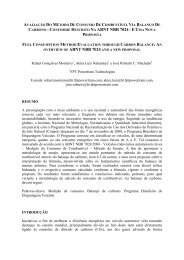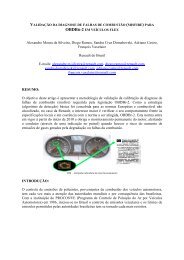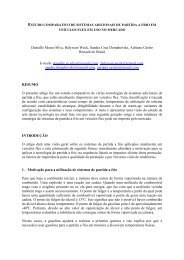Orlando Volpato, Delphi - AEA – Associação Brasileira de ...
Orlando Volpato, Delphi - AEA – Associação Brasileira de ...
Orlando Volpato, Delphi - AEA – Associação Brasileira de ...
You also want an ePaper? Increase the reach of your titles
YUMPU automatically turns print PDFs into web optimized ePapers that Google loves.
Page 4 of 18<br />
Fig. 3: Petrol price projections scenarios<br />
The analysis above shows that, <strong>de</strong>spite the apparent self-sufficiency in petrol, it is<br />
very important to substitute renewable fuels for diesel fuel in or<strong>de</strong>r to pursue a more<br />
favorable tra<strong>de</strong> balance.<br />
In the following paragraph, some sugar and alcohol agricultural sector data will be<br />
presented along with benefits of using ethanol to substitute part of the diesel used in<br />
sugar-cane agricultural operations.<br />
1.1 Sugar and alcohol agricultural sector data (2008/2009 harvest)<br />
Compiling sugar-cane agricultural data, available from many groups like: I<strong>de</strong>a,<br />
Cepea/Esalq, UNICA, CONABE and others, we can make the summary for the<br />
2008/2009 harvest. See additional sources [30], [31], [32] and [33].<br />
About 569 million tons of sugar-cane was processed by about 420 sugar and/or<br />
ethanol mills [29][34]. See figure 4 below. There are about 35 new mills currently in<br />
construction.<br />
On the average, each ton of sugar cane produces about 84 liters of anhydrous<br />
ethanol (<strong>AEA</strong>C, used to make gasoline C from its mixture with gasoline A).<br />
On the average, each ton of sugar cane produces about 90 liters of hydrous ethanol,<br />
which is sold at fuel as E100. There is an excess electricity of about 12 KWh per ton<br />
of sugar cane.<br />
Diesel fuel is used at an average rate of 2.03 liters for each processed ton of sugar<br />
cane, amounting to approximately 1.16 billion liters of diesel per harvest.<br />
From that amount of fuel, about 60% is used for road transportation and 40% is used<br />
by tractors, harvester and other off-road equipments used in the farms and mills.


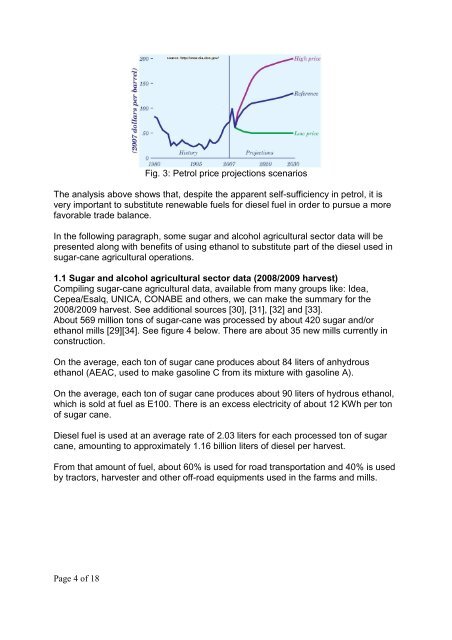

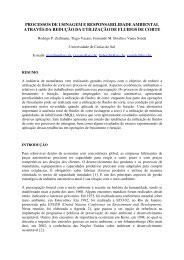
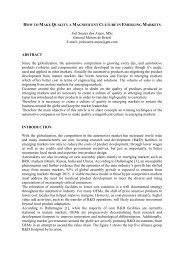




![Charles Correa Conconi, Mercedes-Benz [Modo de Compatibilidade]](https://img.yumpu.com/36264008/1/190x135/charles-correa-conconi-mercedes-benz-modo-de-compatibilidade.jpg?quality=85)

